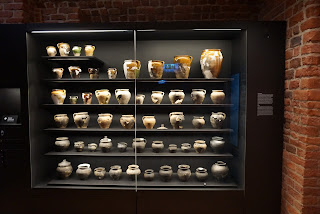We make a long story short
#Warsaw tour guide #Warsaw city guide # guided tour in warsaw #Warszawa tour guide #Warszawa city guide #guided tour in Warszawa
Warsaw was established as a town around the year 1300, and with the Polish-Lithuanian Union in 1385, the town gained a central location in the new kingdom, although the region remained a self-governing principality. The original street plan has been maintained to this day, and already in 1339 an international arbitration was held in the Church of John the Baptist between Poland and the Crusaders, who had annexed areas around the Baltic Sea coast.
Warsaw was so successful that in 1400 a new town was established, right next to old Warsaw. It then became the Old Town and the New Town, which functioned as two independent boroughs until 1795.
Warsaw was the capital of the Principality of Masovia, which was an independent Polish state. In 1526, Warsaw came back under the Polish crown after the princes had died without leaving heirs.

Ceramics from medieval Warsaw on display at the Warsaw Museum on the Rynek
From 1569, Warsaw became the seat of the most important parliamentary meetings in the union between Poland and Lithuania, and when a fire broke out at the royal palace in Krakow in 1596, the king moved the royal residence to Warsaw, which then in effect became the capital of Poland.

The Sigismund Column from 1644 in front of Warsaw’s Old Town is intended to commemorate King Sigismund III Wasa, who moved the capital from Cracow to Warsaw.
In 1795, Poland was divided between Russia, Prussia and Austria, and Warsaw then became a border town in the Russian Empire, briefly interrupted by a period under Prussia (1795-1807) and the client state of the Principality of Warsaw (1807-1815), which was established by Napoleon .
For the next hundred years, Warsaw grew, but also suffered setbacks when rebellions broke out in the town. From 1831, the town lost its right to a limited degree of local administration and passed to a central Russian administration, which tried to eradicate Polish language and culture.
After World War I, Poland was reborn with Warsaw as its capital. The town was an ethnic patchwork, and of the town’s 1.3 million inhabitants 30% were of Jewish descent at the start of World War II in 1939.
World War II caused significant destruction to Warsaw, partly during the conquest, and later after rebellions in 1943 and 1944, when the Germans razed large parts of the city to the ground as revenge.
After the Second World War, large parts of the city lay in ruins, which gave the opportunity to rethink urban planning. Large parts of Warsaw are today characterized by the reconstruction that took place in the period up to the end of the 1950s, when the city’s new blueprint was laid. Later, the architectural style in Poland developed towards concrete blocks, which also came to characterize the Polish capital.
Communism fell in 1989, after which some freedom was given to new architectural directions. Today, Warsaw appears architecturally as a super-modern capital. With its many sophisticated skyscrapers, the impression of the city centre rather leads the mind to a modern and dynamic metropolis than the somewhat dusty and grey city, into which Warsaw had developed at the time of the collapse of communism.
Please send an email to m@hardenfelt.pl if you would like an English-speaking tour guide to show you the most important places in Warsaw.
